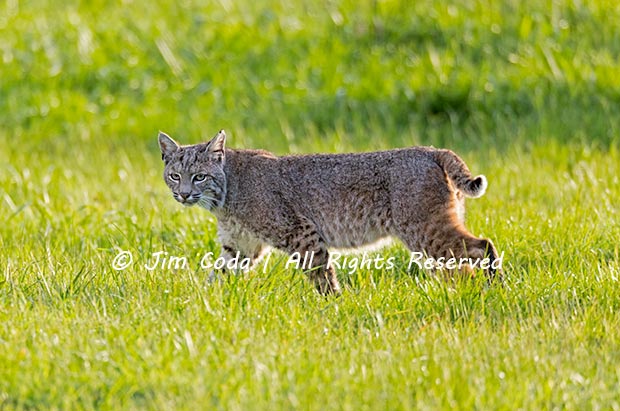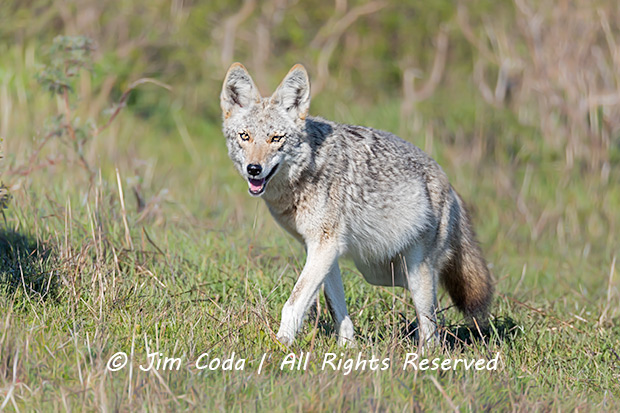Bobcat, Point Reyes National Seashore

Bobcat with Eye Injury
This is a much tighter crop than I would normally do, but I wanted to show you what appears to be a serious injury to this bobcat’s left eye. There is a black line that runs at a 45 degree angle in the eyeball. It may be blind in that eye. I’ve also seen two different badgers at Point Reyes with what seemed to have been serious eye injuries. One seemed to have no visible pupil in one eye and the other seemed to have no visible pupil in either eye. I assume the latter was totally blind. It had two cubs with it and it looked to be in good health.
I don’t know how these things happen, but one possibility is that they get poked in the eye by little bits of vegetation like broken branches or twigs.









